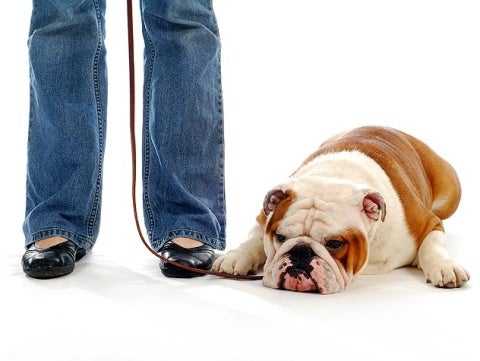How To Teach a Dog “Down”

How To Teach a Dog “Down”
Shelter dogs aren’t the type to lie low and watch the world of human feet go by visiting hours are the time to show off how loud you can bark and how high you can jump. But in just a few minutes, you can have your bouncy dogs on their bellies in no time. More than just an amazing trick, the “down” exercise is a quick and easy source of mental stimulation for dogsand a great way to show adopters how trainable your animals really are. Shelter dogs who know how to respond to the flick of a wrist also have a hip edge over their counterparts in pet stores.
How to teach a dog down
Download Transcript1. Good Eats Make Attentive Students
First, choose an eager canine student who is relatively at ease in the shelter; this method is most appropriate for happy, stable dogs whose social skills need just a bit of refining. Take your new friend to a venue that’s a bit less distracting than the kennels: an office or dog-walking area will do. (You can even incorporate this mini-session into doggie potty breaks.) Have a handful of tasty treats at the readythe way to a canine’s mind is often through his tummy.
2. Practice Doggie Sign Language Start the dog in the “sit” position. Kneel or squat so you’re closer to whisker level. Now employ the hand signal by flashing your right hand in front of the dog’s eyes, with your palm toward the dog and your fingers together; at the same time, lower your left, treat-filled hand and place it between his paws.
Hold the treats in place while you quickly move your right hand to your little buddy’s shoulders; rest your hand there gently. Do not force or push the dog down; your hand signal simply goes along for the ride to keep him from standing.
If he does happen to spring up, just start him again in the “sit” position and repeat the above steps. As soon as his elbows touch the ground, reward him instantly so he learns to associate food with lying flat on his tummy. If he gets excited, he may pop back up; in this case, just stop feeding so he can distinguish between behaviors worthy of treats and those that are a little less desirable.
3. He’s Down But Not Out
Repeat the exercises above until your precocious student is plopping down on a dime. To teach your friend how to stay down, release him with a quiet “okay” before he gets up, but don’t say anything once he is up and moving around. Praising and feeding him while he’s down will ensure that he gets the message about what you want him to do.
4. How Low Can He Go?
Now it’s time to test your poochy protege’s ability to apply what he’s learned. Start by luring him to the down position with your hand signal in the air and some treats near his toes. Instead of giving him a treat, release him from the position with an “okay.” Lure him down again, this time rewarding him with a treat when he comes in for a landing. Once he’s accomplished this step, he’s ready for a more advanced examination: Hold the treats in your left hand, but keep that hand in front of his nose rather than on the floor. Don’t lure this time; just give the dog the hand signal, and keep your hand suspended there as you watch the wheels start turning.
5. Behold the Touchdown
Allow the dog some time to make the connection between behavior and treats. If your friend starts looking confused, moving his gaze from the treats to your hand and back to the treats again, don’t worry. Be patient; this may be the first time in his life that he’s been encouraged to use his brain, so give him time to figure out the correlations. Just when you think you’ve all but lost him, he’ll plop that little tummy down with gusto. Reward the little guy immediately, allowing him to nibble from your jackpot of treats. If he doesn’t go down, don’t worry; just repeat steps 1 and 2, and test again.
6. Rise and Shine Once the dog has mastered his new trick, elevate his knowledge a bit by teaching him to understand the “down” signal when it’s delivered a few feet above his head. First, while you’re still kneeling, hold the treats near your waist with one hand while giving the hand signal with the other hand. Give the dog a treat as soon as he’s down. Now stand up, still holding the treats, and see if the dog understands your hand signal from higher ground. Sometimes munchkin dogs who are low to the ground have a harder time with this, so if yours doesn’t respond immediately, don’t worry. Just crouch down halfway and gradually work your way up to a standing position. Soon enough, the hand signal will become second nature to your little buddyand he’ll be sinking to new and wonderful lows every time an employee, volunteer, or potential adopter flashes a palm at him.
| This is the second in an occasional series of How-tos based on the methods of Sue Sternberg, a nationally recognized expert in dog training who boards owned dogs and shelters homeless ones at her Rondout Valley Kennels in Accord, New York. To learn how to teach a dog to sit, see the November-December 2000 issue. |